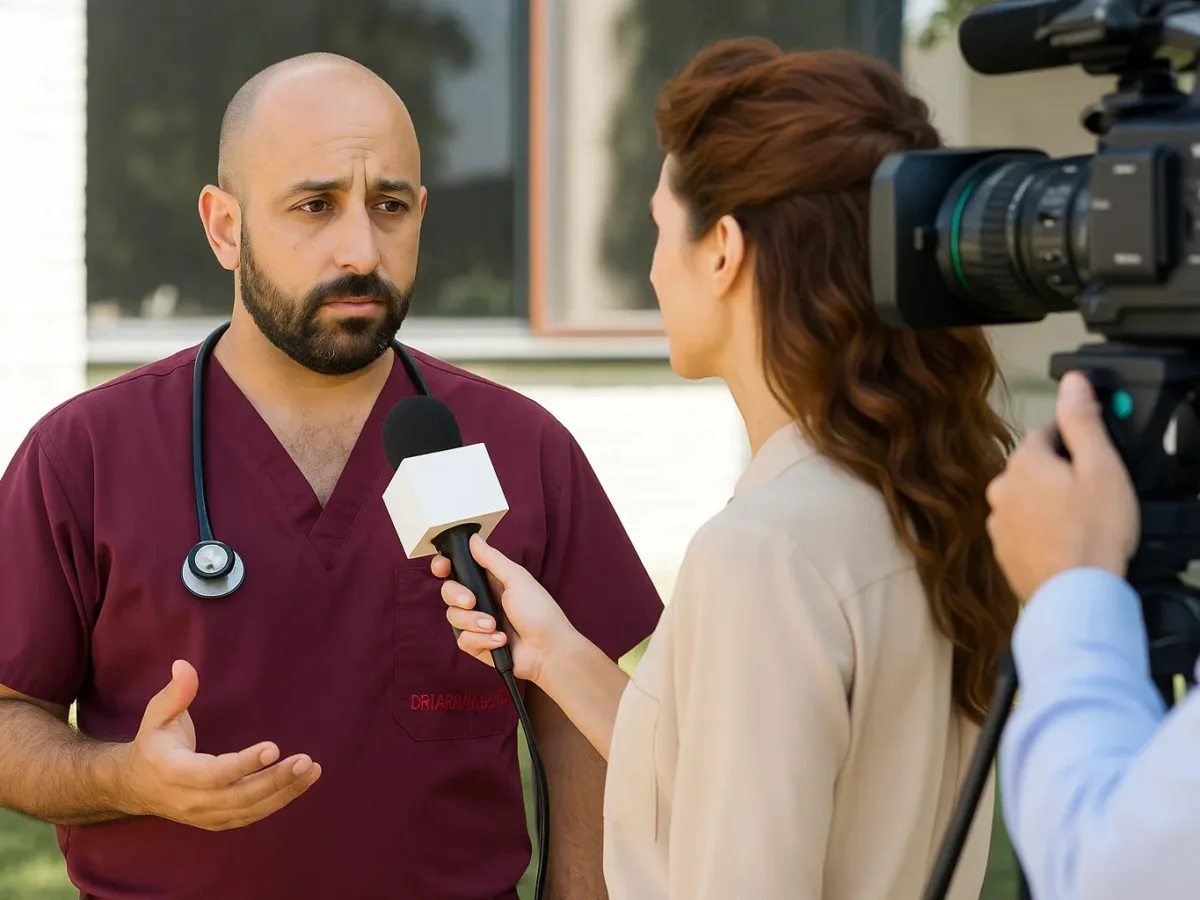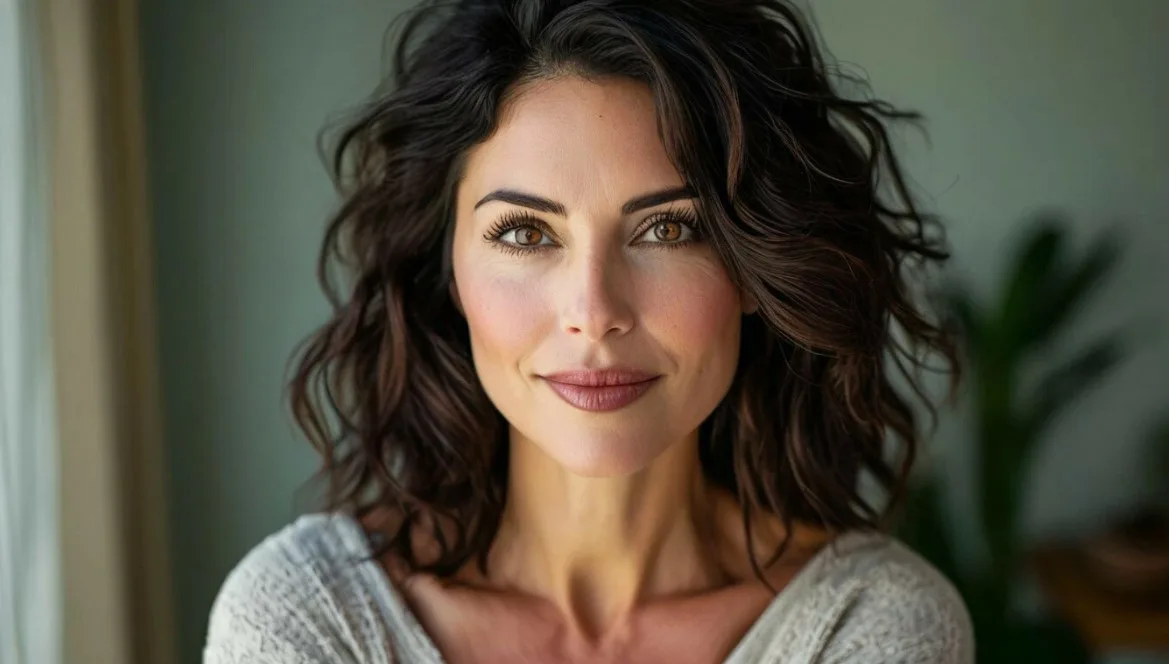Secrets of Modern Aesthetics for Los Angeles Residents
An in-depth conversation with Dr. Aram Mkhitarian, D.O., cosmetic physician
Not every woman in Los Angeles has the opportunity to see a cosmetic specialist on a regular basis, invest in professional-grade products, or chase every new beauty trend. Yet the desire to look radiant, youthful, and full of energy is universal.
So, when is it worth choosing at-home skincare instead of costly procedures in a clinic? Do all of us really need Botox and fillers? And how can you tell if your aesthetic doctor is the type of professional who won’t push unnecessary treatments but will quickly and effectively refresh your face, body, and even your mood?
These and many other questions we discussed with Dr. Aram Mkhitarian, D.O., an experienced cosmetic physician practicing in Southern California.
At What Age Should You See a Cosmetic Doctor?
Q: Imagine a young woman with perfectly smooth, clear, and glowing skin. Should she visit a cosmetic doctor?
A: Cosmetic medicine is still medicine, which means every procedure requires clear medical indications: wrinkles, dryness, acne, pigmentation, papillomas, etc. If there are no visible issues, then there’s no need to see a cosmetic doctor. A young woman with flawless skin should wait a few years before making her first appointment.
However, the reality is that very few people have “perfect” skin, even in youth. Oily, breakout-prone skin often appears in teenage years and can continue into adulthood. That alone is a valid reason to consult a doctor—regardless of age, gender, or background. Another common reason to see a specialist: the very first signs of aging such as fine lines on the forehead, between the brows, or crow’s feet around the eyes. These are easily corrected at an early stage, preventing deeper wrinkles in the future.
Building Skincare Habits Early
Q: At what age should women begin a dedicated skincare routine?
A: Skincare should start as early as possible—it should become as natural as brushing your teeth or exercising. Everyone, including children, needs a cleansing step at the end of the day to remove buildup and environmental impurities.
Here in Los Angeles, where the water is often treated and harsh on skin, I recommend cleansing with micellar water or gentle lotions rather than plain tap water. After cleansing, the next step depends on skin type, concerns, and sensitivity. Moisturizing, calming inflammation, brightening, or oil control can all be addressed with serums, masks, gels, or creams.
One rule is universal: anyone over 25 years old in Southern California should always use a daily product with SPF 15 or higher. Given our year-round sunshine and intense UV exposure, SPF isn’t optional—it’s essential.
What Skincare Products Actually Work?
The market is flooded with choices: mass-market, luxury, and professional formulas. Mass-market lines are inexpensive but often contain cheaper ingredients. Luxury brands look beautiful on the shelf and include higher-grade components, while professional products are concentrated and designed to support clinical treatments.
But price doesn’t guarantee effectiveness. What matters is finding the right active ingredient for your specific issue. For example, salicylic acid—a cost-effective ingredient—is highly effective against inflammation and acne, and it appears in mass, luxury, and professional skincare.
Misuse of any category—mass, luxury, or professional—can harm the skin. That’s why proper selection and guidance are key.
Who Needs Professional Skincare?
Professional treatments are performed only by trained specialists. They may include massage techniques combined with potent skincare formulas, creating not only visible results but also a deeply relaxing effect.
I recommend professional treatments for women who notice the first signs of aging but aren’t yet ready for injectables, or as maintenance therapy after in-office procedures.
Common Skin Problems in Los Angeles
Acne
Acne is one of the most common conditions I treat—affecting over 80% of teens and around 30% of adults. It results from overproduction of oil in the sebaceous glands, which causes clogged pores and inflammation.
At-home care includes thorough cleansing with salicylic acid, mild acids, or alcohol-based toners. But lasting results require medical treatments: deep cleanings, chemical peels, plasma therapy, or cryotherapy. Severe acne may call for oral retinoids or antibiotics.
Pigmentation
In sunny Southern California, pigmentation is a huge concern. Prevention is easier than treatment: sun protection and avoiding burns are non-negotiable. If pigmentation appears, professional solutions include chemical or laser peels, phototherapy, plasma therapy, and mesotherapy.
Home care focuses on anti-inflammatory, antioxidant (vitamins C, E, alpha-lipoic acid), and exfoliating ingredients (mandelic, citric acids), as well as botanicals like arbutin or licorice extract. Most importantly, daily sunscreen use is critical.
Wrinkles
Wrinkles form due to two mechanisms: repeated muscle contractions and reduced collagen/elasticity. Injections such as Botox relax facial muscles, while mesotherapy or biorevitalization replenish hyaluronic acid and stimulate collagen.
For those who avoid injections, peptide-based cosmetics (Argireline, SNAP-8, Syn-ake, etc.) can provide a gentle “Botox-like” effect. Alpha-hydroxy acids, retinol, and hydrating agents also help improve texture and tone.
Loss of Skin Firmness
Loss of elasticity often accelerates during menopause due to estrogen decline. Plant-based phytoestrogens (from red clover, soy, pomegranate, etc.) in supplements or creams can help.
For stronger results, we use in-office methods: thread lifts, plasma therapy, Radiesse fillers for skin support, and advanced hardware technologies such as Fraxel, Thermage, and Ulthera System. Each offers unique benefits, and combining them can yield dramatic rejuvenation.
Puffiness and Dark Circles
Under-eye swelling often worsens overnight. Limiting water and salty foods before bed and sleeping with the head elevated can help. Cryomassage (cold therapy) is excellent—it improves circulation, tones vessels, and reduces puffiness.
In clinics, cryomassage is performed using liquid nitrogen at a temperature of –320.44 °F. At home, you can achieve similar benefits by massaging the skin with ice cubes made from chamomile tea. Afterward, apply a vitamin K cream to strengthen capillaries.
The Biggest Mistakes Women Make
- Neglecting sun protection—or worse, using tanning beds.
- Smoking.
- Ignoring problems until it’s too late—sometimes the only option then is plastic surgery.
What Procedures Are Best by Age?
20–30 years
- Mechanical & ultrasonic cleanings
- Gentle peels
- Facial massage
- Plasma therapy
30–40 years
- All of the above plus: mesotherapy, biorevitalization, contouring, Botox
40–50+ years
- All of the above plus: thread lifting, advanced hardware procedures (Fraxel, Thermage, Ulthera, etc.)
Final Thoughts: How to Choose the Right Cosmetic Doctor
The outcome depends entirely on your provider. Look at their credentials, ask about certifications, and notice how they look themselves. A great cosmetic doctor is a walking example of their craft.
Start small with a consultation or a gentle procedure, and evaluate the results before committing. Remember: only certified physicians should perform injections or advanced hardware methods.
✨ In Los Angeles, where appearance is deeply tied to confidence and lifestyle, investing in your face is not vanity—it’s smart self-care. Clothing, cars, and accessories can always be replaced, but your face is forever.


